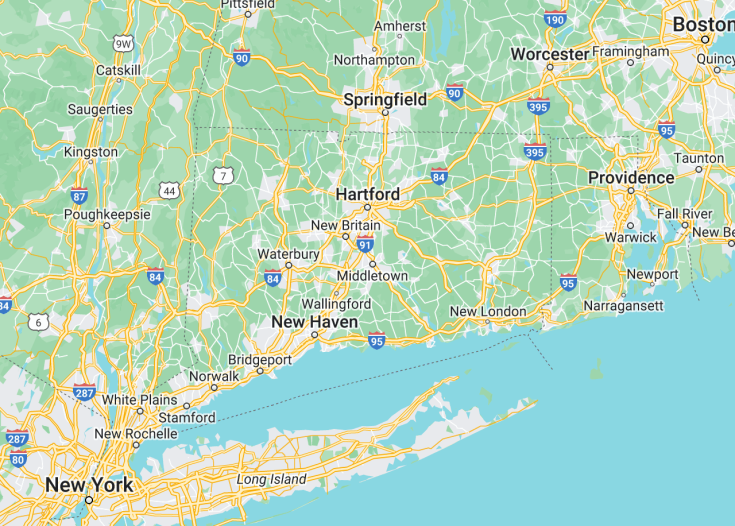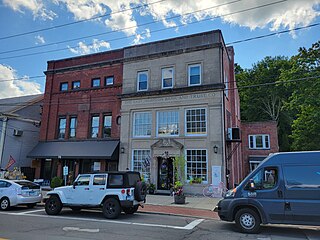Connecticut, a gem in New England’s crown, offers a harmonious blend of coastal towns, rolling hills, and cultural richness. Drenched in history, from its Ivy-League Yale University to the maritime Mystic Seaport, Connecticut seamlessly bridges the charm of yesteryears with contemporary allure. With its picturesque landscapes, renowned museums, and diverse culinary delights, this state promises a unique blend of experiences for every traveler.
Explore the scenic Connecticut Wine Trail, boasting over 25 distinct vineyards, each offering a unique tasting experience.
For a touch of nostalgia, consider boarding the Essex Steam Train, offering panoramic views of the Connecticut River Valley.
How to best experience Connecticut (USA)?
Search for Tickets, tours, and activities in Connecticut (USA) using direct search on the following providers:
GetYourGuide.com Viator.com Trip.com Expedia.com Tiqets.com Ctrip.com (中文)
Top cities to visit in Connecticut (USA)
Discover the best cities of Connecticut (USA) and best places to visit.
Connecticut: The Nutmeg State with a Rich History.
| Capital | Hartford |
| Time in Connecticut | GMT-5 (Eastern Standard Time) |
| Language spoken | English |
| Population | 3,605,944 (U.S. Census Bureau, 2020) |
| Religion | Christianity (70%) Catholicism (38%) Protestantism (30%) Unaffiliated (23%) Judaism (3%) Other religions (4%) |
| Currency | U.S. Dollar ($, USD) |
| Airports | Bradley International Airport Tweed New Haven Airport Waterbury-Oxford Airport |
Connecticut, one of the original 13 colonies, holds an esteemed place in the annals of American history. Its legacy as the “Constitution State” stems from the Fundamental Orders of 1639, a pioneering document that arguably laid the groundwork for modern democratic governance. Beyond its historical significance, Connecticut offers a tapestry of experiences — from its serene coastal towns and world-class educational institutions to its contributions to literature and industry. A blend of pastoral beauty and urban sophistication, Connecticut has been an influential hub, shaping the nation’s political, cultural, and economic narratives.
Where is Connecticut located?
Connecticut is located in the northeastern United States, part of the New England region. It shares borders with Massachusetts to the north, Rhode Island to the east, and New York to the west and south.
What is Connecticut famous for?
Connecticut is renowned for its pivotal role in American history, prestigious educational institutions like Yale University, and its picturesque towns along the Long Island Sound. It’s also famed for its role in American literature and its vibrant maritime traditions.
History
Pre-Colonial Era: Before the 1600s
Before European settlers arrived, the region now known as Connecticut was home to numerous Native American tribes such as the Mohegans, Pequots, and the Paugussetts. These indigenous peoples had been living in the area for thousands of years, establishing communities, trade networks, and a rich tapestry of cultures.
European Exploration: Early 1600s
European exploration began in the early 17th century with Dutch explorer Adriaen Block, who sailed up the Connecticut River and established a fur trading post at Hartford. The Dutch laid claim to the region, but their hold was tenuous at best. Soon, English settlers from the Massachusetts Bay Colony began to show interest in the fertile lands and potential for trade.
English Settlement and Colonial Era: Mid-1600s to 1770s
By the mid-1600s, English Puritans had established a sizable settlement in Hartford, followed by others in Windsor and Wethersfield. The new settlers sometimes clashed with the indigenous tribes, culminating in the Pequot War of 1637. The war ended with the near-destruction of the Pequot tribe and the establishment of English dominance. In 1662, the English secured a Royal Charter, formally recognizing the Connecticut Colony. Over the next century, Connecticut prospered as a hub of trade, agriculture, and maritime activities, although it remained relatively small in population.
Revolution and Statehood: 1770s to 1800
Connecticut played an active role in the American Revolution, supporting the patriot cause and hosting a Continental Army headquarters in New Haven. Known as the “Provision State,” Connecticut supplied vital food and munitions to the Revolutionary forces. After the war, in 1788, Connecticut became the fifth state to ratify the United States Constitution. With statehood came the gradual decline of Connecticut’s maritime industry, but it set the stage for industrial growth.
Industrialization and Growth: 1800 to Early 1900s
The 19th century saw Connecticut transform into an industrial powerhouse. Towns like Waterbury, Hartford, and Bridgeport became centers of manufacturing, producing goods ranging from clocks to firearms. The state’s innovation was exemplified by figures like Samuel Colt, who pioneered the mass production of revolvers. Connecticut’s prosperity attracted a diverse range of immigrants, enriching its cultural fabric. However, it also faced challenges, including labor disputes and the societal impacts of rapid urbanization.
Modern Era: Mid-1900s to Present
Post-World War II Connecticut experienced suburbanization, with many residents moving from cities to the suburbs. The state also saw a decline in manufacturing but rose as a center for services, finance, and insurance. Cities like Hartford became known as the “Insurance Capital of the World.” In recent decades, Connecticut has grappled with economic challenges, demographic shifts, and debates over education and infrastructure. Nonetheless, it remains a state rich in history, culture, and potential, playing an integral role in the narrative of America.
Visit Connecticat
What to see and do in Connecticat
Connecticat offers a variety of attractions and activities for visitors to enjoy. Here are some highlights:
- Explore the historic district: Take a stroll through the charming streets of the historic district and admire the well-preserved colonial architecture.
- Visit the Connecticat Museum of Art: Discover a diverse collection of artworks, ranging from classical to contemporary, at this renowned museum.
- Take a boat tour: Enjoy a scenic boat tour along the Connecticat River and take in the beautiful views of the city skyline.
- Attend a performance at the Connecticat Symphony Orchestra: Immerse yourself in the world of classical music by attending a concert by the prestigious Connecticat Symphony Orchestra.
- Explore the Connecticat Science Center: Engage in hands-on exhibits and interactive displays that make learning about science fun for all ages.
Events in Connecticat
Connecticat hosts a range of events throughout the year, offering visitors a chance to experience the city’s vibrant culture and community. Some notable events include:
– Connecticat Food Festival (June): Celebrate the city’s culinary scene during this food festival, which showcases local chefs, restaurants, and food vendors.
– Connecticat International Film Festival (September): Immerse yourself in the world of cinema with screenings of independent and international films, as well as Q&A sessions with filmmakers.
– Connecticat Jazz Festival (July): Experience the smooth sounds of jazz at this annual festival, featuring performances by renowned jazz musicians from around the world.
– Connecticat Holiday Market (December): Get into the festive spirit at this holiday market, where you can browse unique crafts, artisanal goods, and delicious seasonal treats.
These events offer a glimpse into the vibrant cultural scene of Connecticat and provide opportunities for both locals and visitors to come together and celebrate.
Best time to visit Connecticat
The best time to visit Connecticat is during the spring and fall seasons when the weather is pleasant, and the city is vibrant with colorful foliage. In spring, you can enjoy the blooming cherry blossoms and participate in outdoor activities such as hiking and biking. Fall is the perfect time to witness the stunning autumn foliage and attend various festivals and events. The summer months also offer warm weather and outdoor concerts and festivals. Winter can be cold, but it’s a great time to experience the city’s cozy atmosphere and enjoy winter sports such as ice skating.
Is Connecticat worth visiting?
Connecticat is definitely worth visiting for its rich history, cultural attractions, and charming atmosphere. The city’s well-preserved historic district is a delight to explore, and the Connecticat Museum of Art offers a diverse collection of artworks. The city’s vibrant events, such as the Connecticat Jazz Festival and Connecticat Food Festival, provide a taste of the local culture and community. However, it’s important to note that Connecticat also faces some challenges, such as urban decay in certain areas. Nevertheless, the city’s revitalization efforts and ongoing development make it an intriguing destination for those interested in history, art, and a unique blend of past and present.




